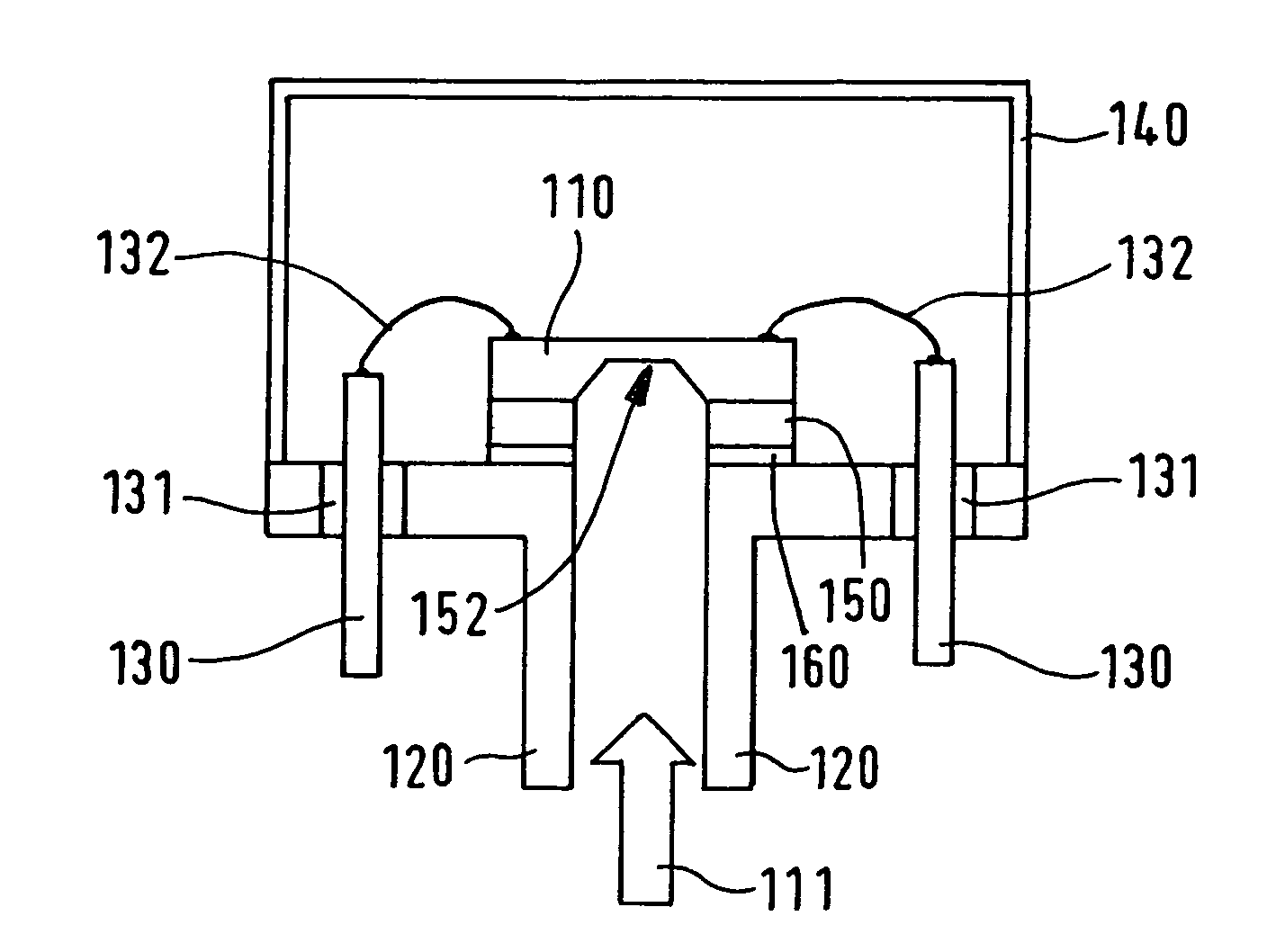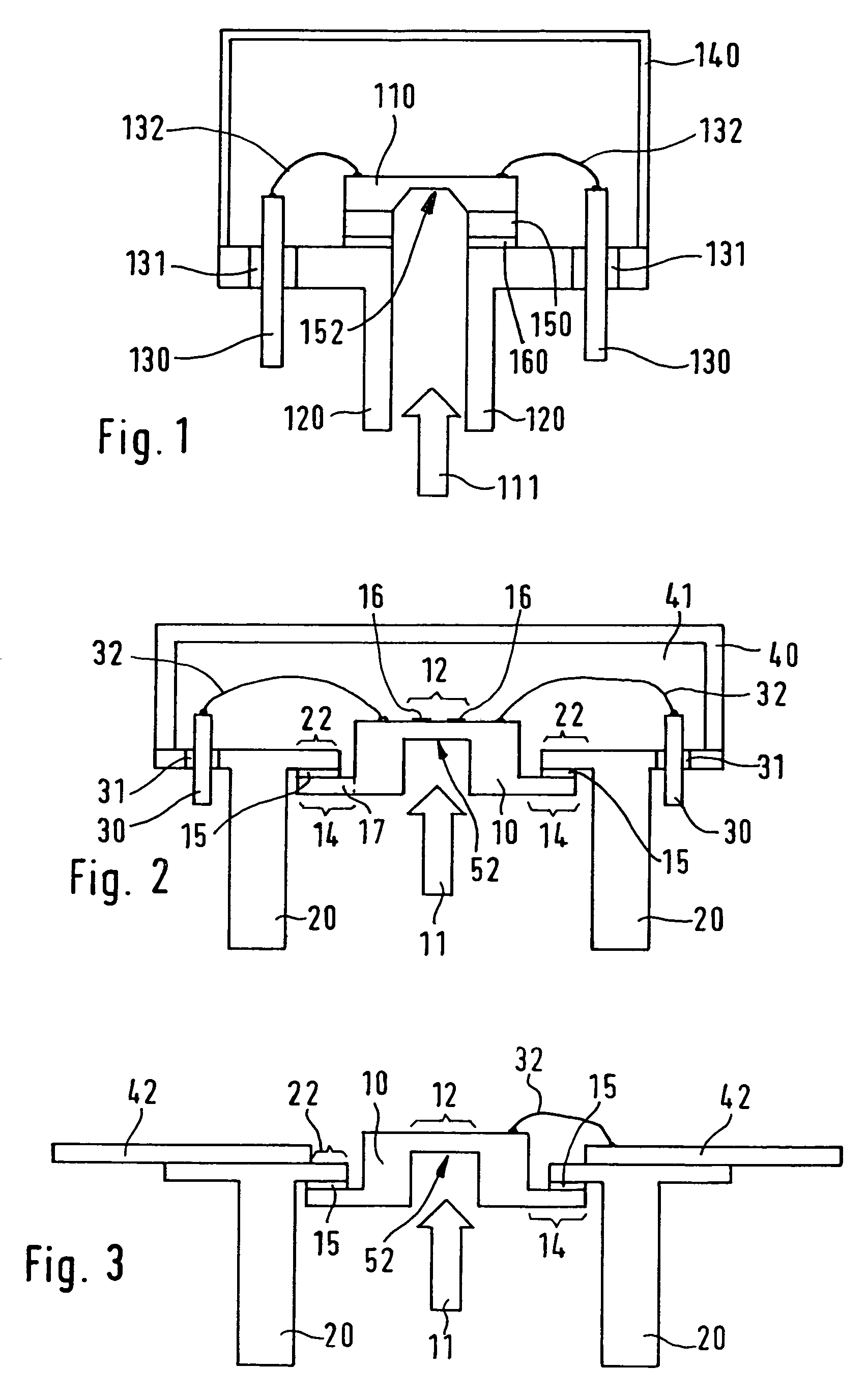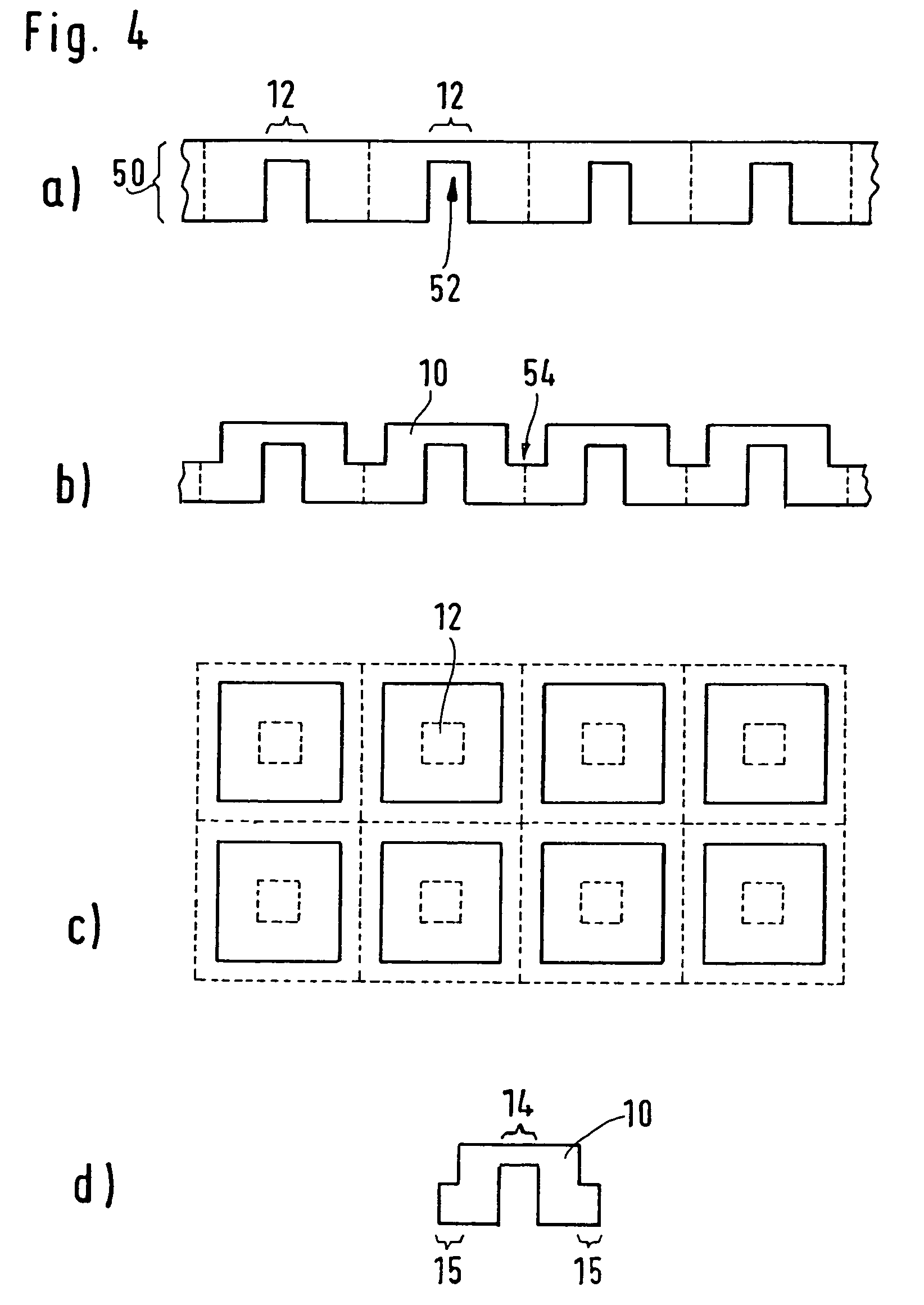Pressure sensor featuring pressure loading of the fastening element
a technology of fastening element and pressure sensor, which is applied in the field of pressure sensor, can solve the problems of particularly high cost and large quantity of pressure sensor manufacture, and achieve the effects of significant overload safety, cost-effectiveness, and simple and cost-effective design
- Summary
- Abstract
- Description
- Claims
- Application Information
AI Technical Summary
Benefits of technology
Problems solved by technology
Method used
Image
Examples
Embodiment Construction
[0012]FIG. 1 shows the generally common design of micromechanical silicon pressure sensors. A silicon substrate 110 is provided with a cavern 152 which creates a diaphragm which is not indicated in detail by a reference numeral. Silicon substrate 110 is connected to a glass 150 which is provided with a bore and is soldered onto a socket 120 via a solder 160. Socket 120 as a single piece is connected to a pressure connecting piece. Furthermore, measuring shunts (not indicated in detail by a reference numeral), which are situated on the top side of silicon substrate 110, are connected to a terminal post 130 via one or multiple contact wires 132, the terminal posts being electrically isolated from socket 120 by a glass insulation 131. Cavern 152 of silicon substrate 110 has a typical etch bevel which has approximately the shape of the frustum of a pyramid. This results in a trapezoidal cross section.
[0013]This frustum of a pyramid-shaped recess underneath the sensor diaphragm results w...
PUM
| Property | Measurement | Unit |
|---|---|---|
| pressures | aaaaa | aaaaa |
| angle | aaaaa | aaaaa |
| pressure | aaaaa | aaaaa |
Abstract
Description
Claims
Application Information
 Login to View More
Login to View More - R&D
- Intellectual Property
- Life Sciences
- Materials
- Tech Scout
- Unparalleled Data Quality
- Higher Quality Content
- 60% Fewer Hallucinations
Browse by: Latest US Patents, China's latest patents, Technical Efficacy Thesaurus, Application Domain, Technology Topic, Popular Technical Reports.
© 2025 PatSnap. All rights reserved.Legal|Privacy policy|Modern Slavery Act Transparency Statement|Sitemap|About US| Contact US: help@patsnap.com



